Hamburger History: What’s Wisconsin got to do with it?
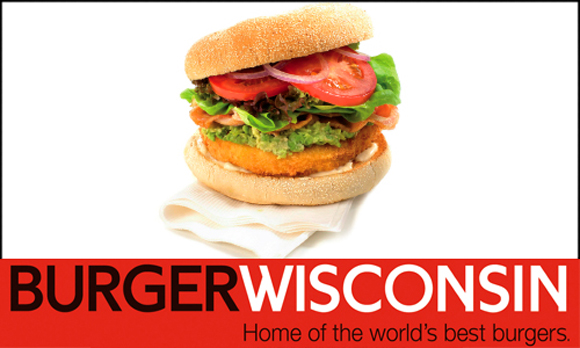
Our story begins in present-day New Zealand and ends in Mongol-era China ... by way of Seymour, Wis. Our hero: the humble hamburger.
Late one night during a discussion about local restaurants with a few internet-friends, an acquaintance native to New Zealand brings up the subject his favorite New Zealand burger chain: Burger Wisconsin.
No. Freaking. Way. How on earth does a burger chain in New Zealand come to call itself Burger Wisconsin? More importantly, does it have anything on the menu that resembles what I know to be a Wisconsin burger? (For reference this means the menu must include coleslaw, sauerkraut, bratwurst, beer, limburger cheese, blue cheese, fried or grilled onions and mushrooms).
So of course I Googled the crap out of this place. The first item I saw on the menu was chicken, cranberry and camembert cheese. I took that as a solid “no".

Further investigation showed that the restaurant bills itself as a locally sourced and environmentally conscious gourmet burger chain. All of which this Wisconsinite approves. However, while the menu at Burger Wisconsin looks delicious, it is not the least bit "Wisconsin." The most Wisconsin thing on the menu is a grilled mushroom and blue cheese mayo burger.
In a sense, what Burger Wisconsin has done is not unlike what America has done to countless other cuisines from around the world (see pizza, omelets, pad thai, sushi and all of Chinese food). Maybe Wisconsin is just another victim of exoticism and appropriating another culture into your own.
Or maybe it’s more interesting than that. After all, things usually are.
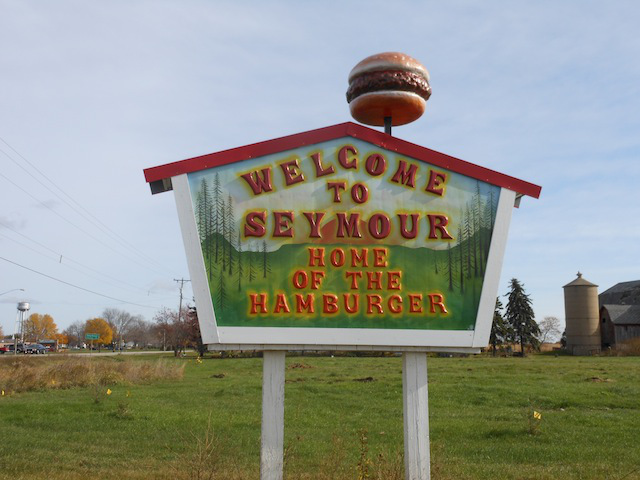
Burger Wisconsin’s website indicates that the name is an homage to a Wisconsin town’s title: “Home of the Hamburger.” As it happens, Seymour, Wisconsin is “officially” recognized as the origin point of the hamburger. But just how official can something like that actually be?
A 2007 joint resolution by the state assembly, that’s how official. Take that, Texas. Here’s an amazing excerpt from the resolution.
“Whereas, other accounts of the origination of the hamburger trace back only so far as the late 1880s, while Seymour’s claim can be traced to 1885; and Whereas, Charles Nagreen, also known as Hamburger Charlie, of Seymour, Wisconsin, began calling ground beef patties in a bun "hamburgers" in 1885; and Whereas, Hamburger Charlie first sold his world−famous hamburgers at age 15 at the first Seymour fair in 1885, and later at the Brown and Outagamie county fairs; and…”
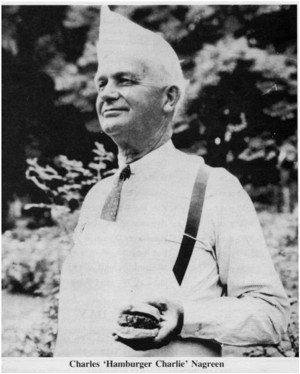
As a disclaimer, I will admit that there are several other possible origins of the Hamburger. Other possibilities include Frank and Charles Menches of Akron, Ohio and Fletcher Davis in Athens, Texas, who both appear to have sold ground beef sandwiches in the late 1880s. Neither of these stories, however, directly reference the name “hamburger.” This is because, as the story goes, Charlie Nagreen of Wisconsin was selling “hamburg steaks” at his county fair stall, and adapted them with pieces of bread so that people could eat them as they walked from stall to stall.
Now, beginning with the hamburg steak, our journey down the hamburger rabbit hole begins.
Days of Burger Past
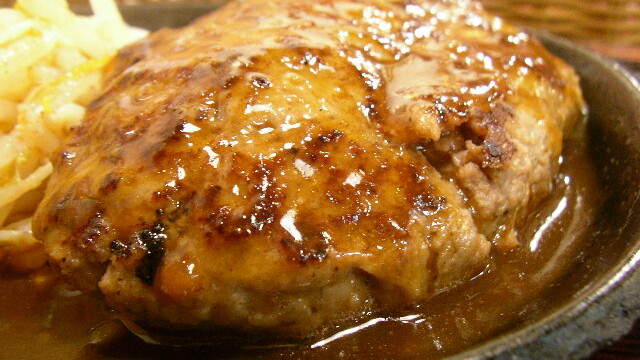
19th century New York City. Hamburg steak, a dish of minced meat, bread crumbs and onions, became popular in the states. This mixture resembles the basic formula of the modern hamburger, but minced meat is hardly an American concept. If Wisconsin was ever going to leave its mark on the history of the hamburger, it would have to be stamped by the Germans first.

17th century Germany, The Port of Hamburg. Maritime trade with Russia leads to an influx of recipes for a “steak tartare.” Steak Tartare is a dish of raw, minced meat with onions. Capers and other ingredients like raw egg would be added in later years to make the modern version of the dish.
13th century Russia, Moscow. Kublai Khan, grandson of Genghis Khan, invades the city and brings with him the practice strapping bags of horse meat to a rider’s steed. The act of riding the horse then tenderizes and minces the meat, a technique that dates back as late as the early 12th century. The word “Tartare” is used in reference to the Tartar people of central Asia who made up the majority of the Mongol Golden Horde. This may be our most definitive origin point of the hamburger.
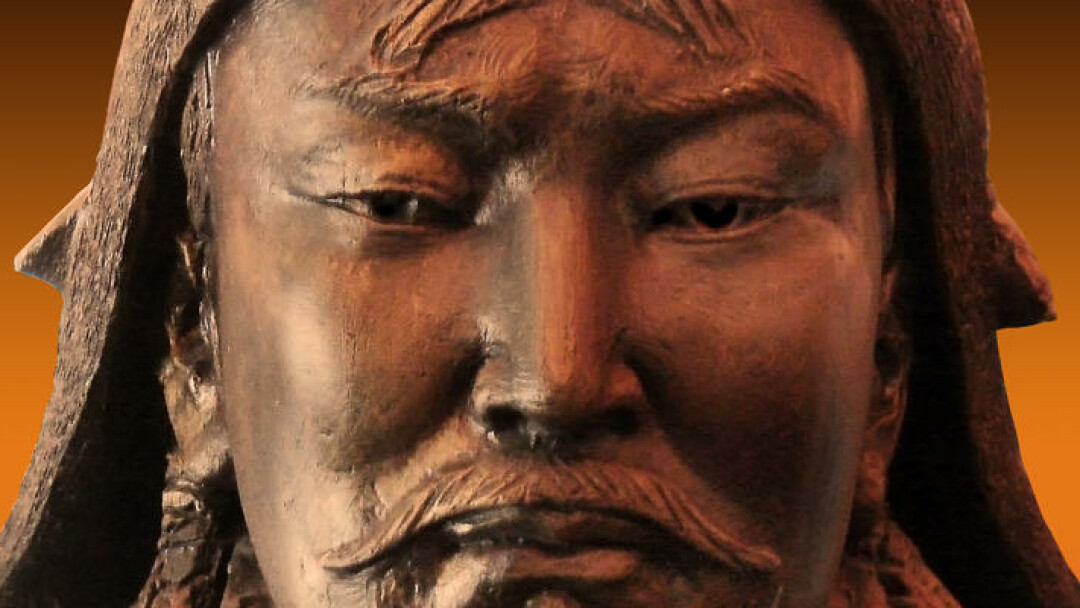
The hamburger is just one case of how food travels and changes as it spends time in every culture it visits along the way. It’s been almost a whole millennium since the first recorded use of minced meat in the Mongol Horde, and it has been innovated and changed along the way: Dr. James Salisbury of the salisbury steak, Walt Anderson and Billy Ingram of White Castle, the McDonalds brothers and Wisconsin's Charlie Nagreen all left their marks on it as it passed west through the world. At this rate, in a few hundred years the hamburger will have circumnavigated the globe. I think a homecoming celebration will be in order. I wonder what it will look like when it makes it back to Wisconsin.






















